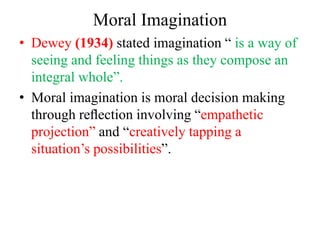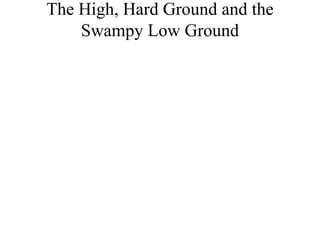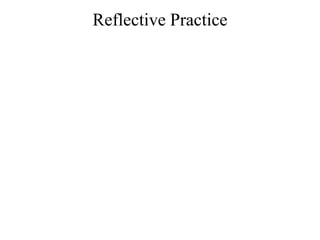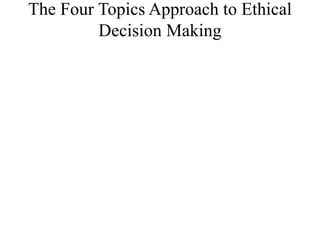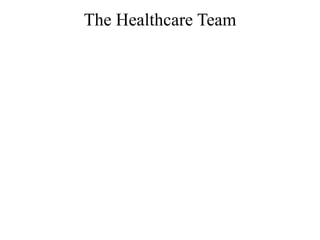BIOETHICS.pptx
- 2. Mcqs âĒ penicillin was discovered in the 1940s. âĒ bioethics, a term that ïŽrst appeared in the literature in 1969. âĒ The Nuremberg trials in 1946-1947 Nuremberg code 1949 ( 10 guidelines) âĒ Tuskegee syphilis research from 1932 -1972 by US. âĒ 1950s thailadome was approved as sedative in Europe. âĒ Helsinki declaration 1964. âĒ Belmont report 1979. âĒ CIOMS in late 1970s. âĒ National Research Act became law in 1974. âĒ Nazi doctors who conducted heinous medical experiments during World War II began.
- 3. Belmont Report âĒ A commission was created to outline three basic principles 1. Respect for persons, 2. BeneïŽcence 3. Justice .
- 4. Principles of Biomedical Ethics(book) âĒ In 2013 Beauchamp and Childress published the ïŽrst edition of their book Principles of Biomedical Ethics, which featured 4 bioethical principles: 1. autonomy 2. nonmaleïŽcence 3. beneïŽcence 4. justice.
- 5. Autonomy Autonomy is the freedom and ability to act in a self determined manner. In the domain of health care, respecting a patientâs autonomy includes; âĒ obtaining informed consent for treatment. âĒ facilitating and supporting patientsâ choices regarding treatment options. âĒ allowing patients to refuse treatments. âĒ disclosing comprehensive. âĒ truthful information, diagnoses, and treatment options to patients. âĒ maintaining privacy and conïŽdentiality.
- 6. âĒ Restrictions on an individualâs autonomy may occur in cases when a person presents a potential threat for harming others, such as exposing other people to communicable diseases or committing acts of violence. âĒ Munhall (2012) used the word autonomy (auto-no-my) as an example. âĒ Being willing and able to say no is part of exercising oneâs autonomy.
- 7. Informed Consent âĒ At the heart of informed consent is respecting a personâs autonomy to make personal choices. âĒ Dempski (2009) presented three basic elements that are necessary for informed consent to occur: 1. Receipt of information, 2. Consent for the treatment must be voluntary, 3. Persons must be competent.
- 8. Elements of Informed Consent Beauchamp and Childress (2013) outlined informed consent according to seven elements. âĒ Threshold elements (preconditions) 1. Competence (to understand and decide) 2. Voluntariness (in deciding) âĒ Information elements 3. Disclosure (of material information) 4. Recommendation (of a plan) 5. Understanding (of 3 and 4) âĒ Consent elements 6. Decision (in favor of a plan) 7. Authorization (of the chosen plan)
- 9. Intentional Nondisclosure âĒ The Institute of Medicine (IOM 2000) began a project to analyze medical errors and try to reduce them. âĒ One outcome of the project is the book To Err Is Human. âĒ Other more legally and ethically controversial circumstances of intentionally not disclosing relevant information to a patient involve three circumstances. âĒ The ïŽrst circumstance falls under therapeutic privilege. âĒ The second relates to therapeutically using placebos. âĒ The third involves withholding information from research subjects to protect the integrity of the research.
- 10. Patient Self-Determination Act âĒ (PSDA), passed by the U.S. Congress in 1990, is the ïŽrst federal statute designed to facilitate a patientâs autonomy. âĒ One of the underlying aims of the PSDA is to increase meaningful dialogue about patientsâ rights to make autonomous choices about receiving or not receiving health care.
- 11. The Health Insurance Portability and Accountability Act of 1996 (HIPAA) Privacy and Security Rules âĒ It is a federal regulation designed to protect people from disclosure of their personal health information other than for the provision of health care.
- 12. Nonmaleficence âĒ It is the maxim or norm that âone ought not to inïŽict evil or harmâ. âĒ Whereas beneïŽcence includes the following three norms: âĒ one ought to prevent evil or harm. âĒ one ought to remove evil or harm. âĒ one ought to do or promote good. âĒ Negligence is âthe absence of due careâ.
- 13. Slippery slope arguments âĒ Often a slippery slope argument is a metaphor used as a âbeware the Ides of Marchâ warning with no justiïŽcation or formal, logical evidence to back it up. âĒ Old saying that when people are given an inch, they eventually may take a mile. âĒ One example of a slippery slope debate occurred with the legalization of physician-assisted suicide (PAS), such as the acts legalized by the Oregon Death with Dignity Act October 1997.
- 14. Beneficence âĒ The principle of beneïŽcence consists of performing deeds of âmercy, kindness, friendship, charity and the likeâ. âĒ Rules of Beneficence 1. Protect and defend the rights of others. 2. Prevent harm from occurring to others. 3. Remove conditions that will cause harm to others. 4. Help persons with disabilities. 5. Rescue persons in danger.
- 15. Paternalism âĒ The deliberate overriding of a patientâs opportunity to exercise autonomy because of a perceived obligation of beneïŽcence is called paternalism. âĒ The word reïŽects its roots in fatherly or male (paternal) hierarchical relationships, governance, and care. âĒ If a nurse avoids telling a patient that her blood pressure is elevated because the nurse believes this information will upset the patient and consequently further elevate her blood pressure, this is an example of paternalism.
- 16. Types of Paternalism âĒ Soft paternalism protect persons from their own non-voluntary conduct. âĒ Hard paternalism Interventions intended to prevent or mitigate harm to or to benefit a person, despite the fact that the personâs risky choices and actions are informed, voluntary, and autonomous.
- 17. Justice âĒ Justice, as a principle in healthcare ethics, refers to fairness, treating people equally and without prejudice, and the equitable distribution of beneïŽts and burdens including assuring fairness in biomedical research.
- 18. Social Justice âĒ Social justice represents the position that beneïŽts and burdens should be distributed fairly among members of a society, or ideally that all people in a society should have the same rights, beneïŽts, and opportunities. âĒ Distributive justice refers to the fair allocation of resources.
- 19. Rawls principles of equality and justice In his book A Theory of Justice, John Rawls (1971) proposed that fairness and equality be evaluated under a veil of ignorance. 1. everyone should be given equal liberty regardless of their adversities. 2. differences among people should be recognized by making sure the least advantage people are given opportunities for improvement.
- 20. 1974 Robert Nozick âĒ In 1974 Robert Nozick presented the idea of an entitlement system in his book Anarchy, State, and Utopia. He proposed that individuals should be entitled to health care and the beneïŽts of insurance only if they are able to pay for these beneïŽts. âĒ A system of libertarianism, meaning justice and fairness are based on rewarding only those people who contribute to the system in proportion to their contributions.
- 21. Norman Daniels (1985) âĒ In his book Just Health Care, Norman Daniels (1985) used the basis of Rawlsâs concept of justice and suggested a liberty principle. âĒ Daniels advocated national healthcare reform and proposed that every person should have equal access to health care and reasonable access to healthcare services.
- 22. Patient Protection and AïŽordable Care Act âĒ Signed into law by President Obama on March 23, 2010, the Affordable Care Act (ACA.) is intended to enact comprehensive healthcare reform in the US, including improving quality and lowering healthcare costs, providing greater access to health care, and providing new consumer protections.
- 23. ProfessionalâPatient Relationships âĒ If healthcare professionals view life as a web of interrelationships, all their relationships potentially can affect the well-being of patients.
- 24. Unavoidable Trust âĒ This unavoidable trust creates an asymmetrical, or uneven, power structure in relationships between professionals and patients, and the patientsâ families (Zaner, 1991). âĒ According to Zaner, healthcare professionals must promise ânot only to take care of, but to care for the patient and familyâto be candid, sensitive, attentive, and never to abandon themâ
- 25. Human Dignity âĒ Shotton and Seedhouse (1998) said the term dignity has been used in vague ways. âĒ They characterized dignity as persons being in a position to use their capabilities and proposed that a person has dignity âif he or she is in a situation where his or her capabilities can be effectively appliedâ. âĒ According to MacIntyre (1999), people generally progress from a point of vulnerability in infancy to achieving varying levels of independent, practical reasoning as they mature.
- 26. âĒ Taking a âthere but for the grace of God go Iâ stance may prompt nurses to develop what MacIntyre called the virtues of acknowledged dependence. These virtues include; âĒ Just generosity a form of giving generously without keeping score of who gives or receives the most âĒ Misericordia is a Latin word that signiïŽes giving based on urgent need without prejudice âĒ Truthfulness involves not being deceptive.
- 27. Moral SuïŽering âĒ Suffering in a moral sense has similarities to the Buddhist concept of dukkha, a Sanskrit word translated as suffering. âĒ Dukkha âincludes the idea that life is impermanent and is experienced as unsatisfactory and imperfectâ. âĒ The Buddha was reported to have said, âBecause the world is sick, I am sick. Because people suffer, I have to sufferâ. âĒ Thich Nhat Hanh (1998) wisely stated, âwithout suffering, you cannot growâ.
- 28. Ethical Dilemmas âĒ A situation in which an individual is compelled to choose between two actions that will affect the welfare of a sentient being, and both actions are reasonably justiïŽed as being good, one action must be chosen. âĒ Kidder (1995) described the heart of an ethical dilemma as âthe ethics of right versus rightâ. âĒ He proposed that people generally can judge wrong choices according to three criteria: violation of the law, departure from the truth, and deviation from moral rectitude.
- 29. Heinz dilemma used by Lawrence Kohlberg in his research. âĒ The story is about Heinz, whose wife is dying of cancer. âĒ She needs a particular drug to save her life. âĒ The pharmacist who makes the drug charges much more than it costs him to make it. âĒ He asks the pharmacist to sell him the drug at a lower cost, but the pharmacist refuses. âĒ Finally, Heinz robs the pharmacy to obtain the drug. âĒ The questionis whether or not Heinz should have done this. Did Heinz face a dilemma? âĒ Weston discussed the Heinz dilemma with his students, and they generated some very creative ways of approaching the problem that did not involve robbing the pharmacy.
- 30. Critical Thinking âĒ In modern times, the American philosopher John Dewey (1859â1952) is considered one of the early proponents of critical thinking. âĒ In his book How We Think, Dewey (1910/1997) summarized reïŽective thought as active, persistent, and careful consideration of any belief or supposed form of knowledge in light of the grounds that support it.
- 31. âĒ Paul and Elder (2006), directors of the Foundation for Critical Thinking, deïŽned critical thinking as âthe art of analyzing and evaluating thinking with a view to improving itâ. âĒ The process of critical thinking is summarized by Paul and Elder (2006) as âself-directed, self- disciplined, self-monitored, and self-corrective thinking [that] requires rigorous standards of excellence and mindful command of their useâ âĒ Fisher (2001) described the basic way to develop critical thinking skills as simply âthinking about oneâs thinkingâ.
- 32. Moral Imagination âĒ Dewey (1934) stated imagination â is a way of seeing and feeling things as they compose an integral wholeâ. âĒ Moral imagination is moral decision making through reïŽection involving âempathetic projectionâ and âcreatively tapping a situationâs possibilitiesâ.
- 33. âĒ . Although Aristotle taught that habit is the way people cultivate moral virtues, Dewey (1922/1988) cautioned that mindless habits can be âblinders that conïŽne the eyes of mind to the road aheadâ. âĒ Dewey proposed that habit should be combined with intellectual impulse.
- 34. The High, Hard Ground and the Swampy Low Ground
- 36. The Four Topics Approach to Ethical Decision Making

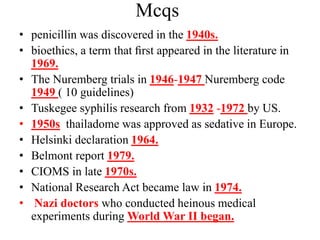
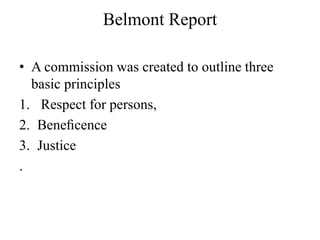
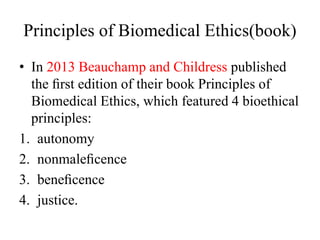
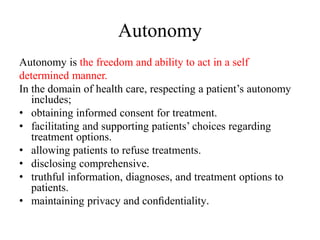
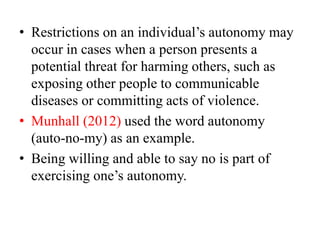

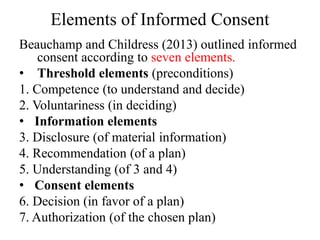

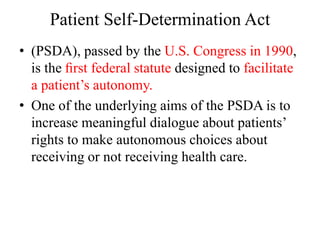
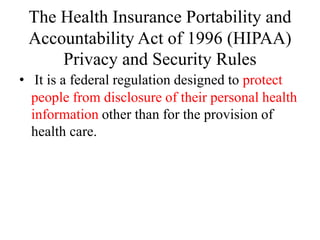
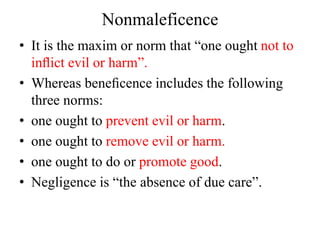
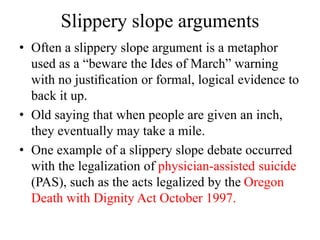
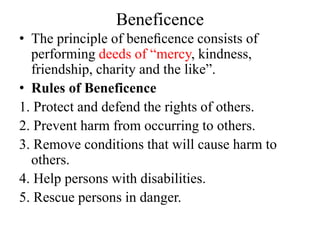
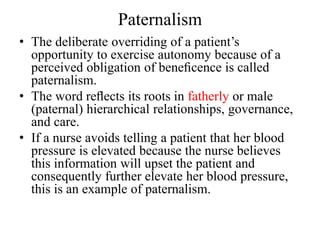
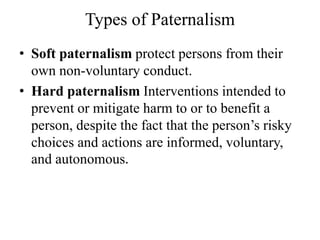
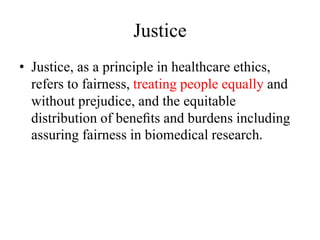
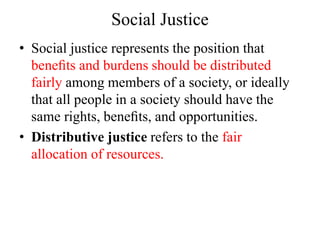
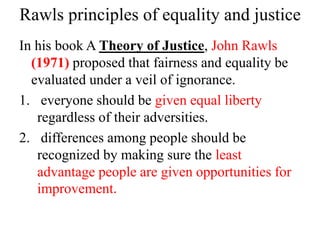

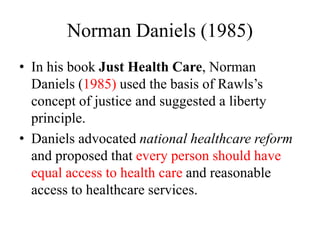
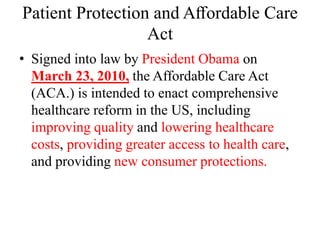
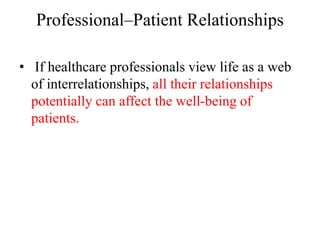
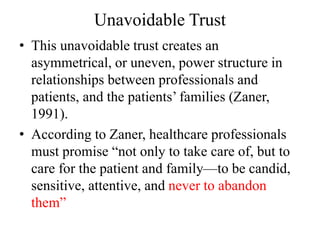

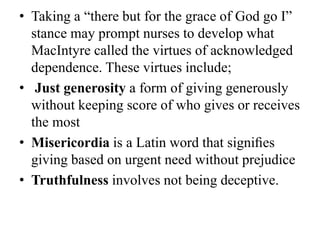

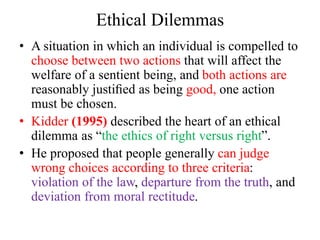

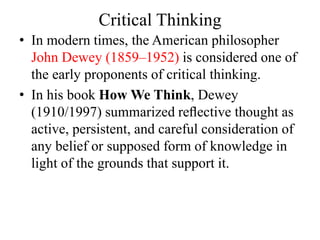
![âĒ Paul and Elder (2006), directors of the Foundation
for Critical Thinking, deïŽned critical thinking as
âthe art of analyzing and evaluating thinking with
a view to improving itâ.
âĒ The process of critical thinking is summarized by
Paul and Elder (2006) as âself-directed, self-
disciplined, self-monitored, and self-corrective
thinking [that] requires rigorous standards of
excellence and mindful command of their useâ
âĒ Fisher (2001) described the basic way to develop
critical thinking skills as simply âthinking about
oneâs thinkingâ.](https://image.slidesharecdn.com/bioethics-221123064942-07775010/85/BIOETHICS-pptx-31-320.jpg)
